Mitsubishi MSZ-BT50VGK Bruksanvisning
Mitsubishi
Luftkonditionering
MSZ-BT50VGK
Läs gratis den bruksanvisning för Mitsubishi MSZ-BT50VGK (40 sidor) i kategorin Luftkonditionering. Guiden har ansetts hjälpsam av 27 personer och har ett genomsnittsbetyg på 4.9 stjärnor baserat på 14 recensioner. Har du en fråga om Mitsubishi MSZ-BT50VGK eller vill du ställa frågor till andra användare av produkten? Ställ en fråga
Sida 1/40

INDOOR UNIT
Outdoor unit service manual
MUZ-BT∙VG Series (OBH850)
MXZ-F∙VF Series (OBH890)
PARTS CATALOG (OBB849)
CONTENTS
1. TECHNICAL CHANGES ······························2
2. PART NAMES AND FUNCTIONS ··················3
3. SPECIFICATION 4 ········································
4. NOISE CRITERIA CURVES 5 ··························
5. OUTLINES AND DIMENSIONS ·····················6
6. WIRING DIAGRAM ····································· 7
7. REFRIGERANT SYSTEM DIAGRAM 9 ·············
8. SERVICE FUNCTIONS 10 ······························
9. MICROPROCESSOR CONTROL ················ 13
10. TROUBLESHOOTING ······························· 17
11. DISASSEMBLY INSTRUCTIONS ················· 31
SERVICE MANUAL
MSZ-BT25VG/VGK
No. OBH849
REVISED EDITION-B
OBH849 REVISED EDITION-A is void.
Revision B:
• MSZ-BT20/25/35/50VGK - E1 , ET1
have been added.
Models
MSZ-BT20VG
- E1 , ER1 , ET1 MSZ-BT20VGK - E1 , ET1
MSZ-BT25VG
- E1 , ER1 , ET1 MSZ-BT25VGK - E1 , ET1
MSZ-BT35VG
- E1 , ER1 , ET1 MSZ-BT35VGK - E1 , ET1
MSZ-BT50VG
- E1 , ER1 , ET1 MSZ-BT50VGK - E1 , ET1
Produktspecifikationer
| Varumärke: | Mitsubishi |
| Kategori: | Luftkonditionering |
| Modell: | MSZ-BT50VGK |
Behöver du hjälp?
Om du behöver hjälp med Mitsubishi MSZ-BT50VGK ställ en fråga nedan och andra användare kommer att svara dig
Luftkonditionering Mitsubishi Manualer

16 September 2025
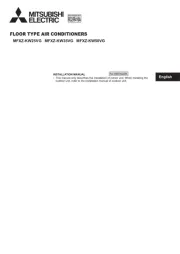
16 September 2025
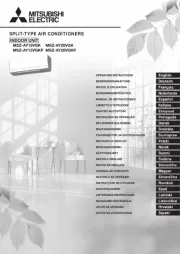
16 September 2025
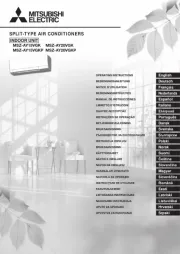
16 September 2025
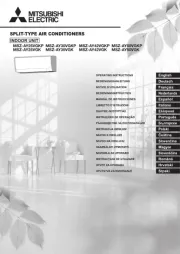
16 September 2025
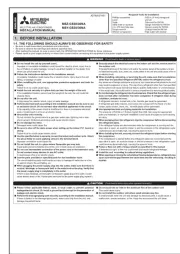
1 September 2025
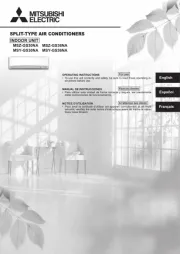
1 September 2025
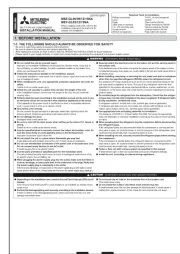
31 Augusti 2025
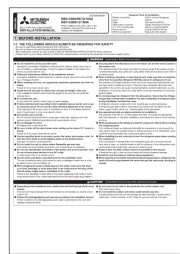
31 Augusti 2025
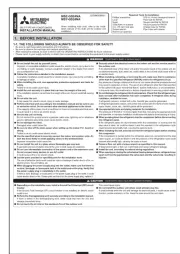
31 Augusti 2025
Luftkonditionering Manualer
- ECG
- Master
- Team
- Suntec
- Zelmer
- Mesko
- MDV
- Sheffield
- Carrefour Home
- KwiKool
- Proklima
- Svan
- Commercial Cool
- Emerio
- Goodwe
Nyaste Luftkonditionering Manualer
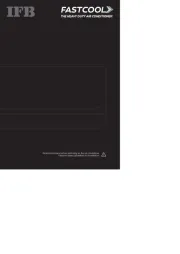
20 Oktober 2025
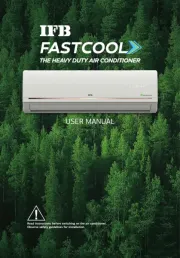
20 Oktober 2025
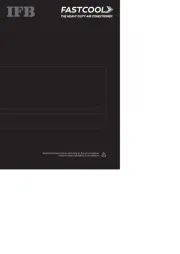
20 Oktober 2025
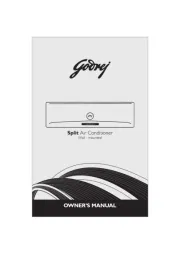
19 Oktober 2025
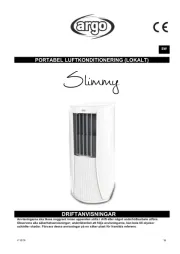
17 Oktober 2025
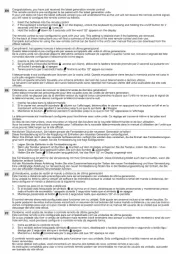
17 Oktober 2025
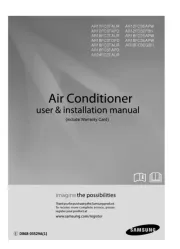
16 Oktober 2025
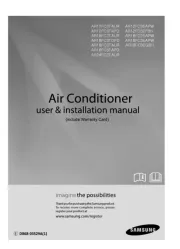
16 Oktober 2025
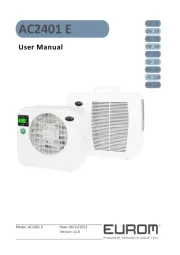
16 Oktober 2025
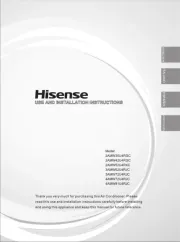
13 Oktober 2025